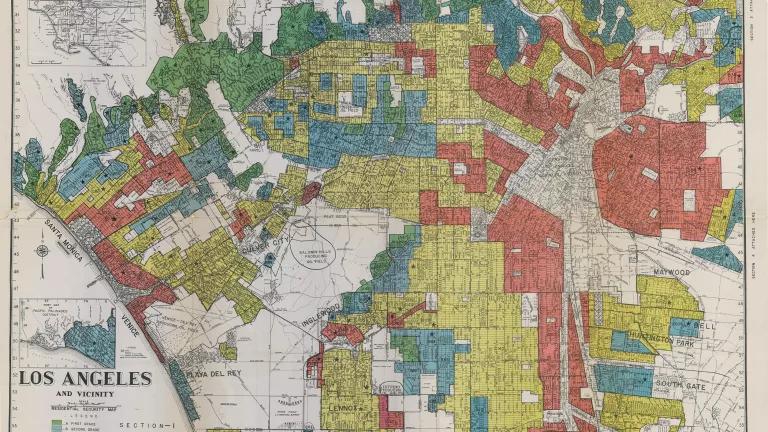Last week, I had the honor of accepting the Southern California Association of Governments' (SCAG) inaugural President's Sustainability Leadership Award, which was presented at their annual General Assembly conference in Palm Desert, CA. I am deeply humbled and honored to receive this award, which is itself a symbol of SCAG's committment to sustainability.

L to R: SCAG outgoing President Glen Becerra, Amanda Eaken, and Executive Director Hasan Ikhrata.
Roughly one year since the SCAG governing board unanimously adopted their first Sustainable Communities Strategy/Regional Transportation Plan to implement SB 375, this gathering offers an opportunity to consider SCAG’s progress, and commit to specific steps to implement this plan in the year ahead.
This plan has received significant praise and attention, both national and international, and yet, as SCAG’s former President Larry McCallon reminds us “This plan means nothing if it’s not implemented.”
We agree. To their credit, the SCAG staff and boardmembers have spent a significant amount of energy over the last year managing six sub-committees on issues such as sustainability, active transportation, and finance, to generate recommendations for plan implementation. These recommendations will come to SCAG's regional council for a vote on June 6th and we urge their adoption.
In addition, we want to offer three specific implementation steps SCAG can take to deliver on the promise of this plan. Think of these as performance benchmarks by which we can measure our progress at the General Assembly next May.
First, we need to make sure that SCAG does the work necessary to allow builders and developers to benefit from the environmental review incentives created by SB 375. The subject of CEQA reform has received significant attention in Sacramento for months. SB 375 itself created some new provisions of CEQA to facilitate implementation of the sustainable communities strategies, but more work needs to be done to make these incentives—which include a new CEQA exemption—available. SCAG needs to take the lead to develop guidelines for determining a project’s consistency with the SCS. The Sacramento region has developed such guidelines and is partnering with local governments to ensure the process works. We need to make it easier to build the walkable, vibrant, transit-oriented communities that the market is overwhelmingly demanding, and that SCAG’s plan relies upon to reach its GHG targets. We’d like to see SCAG commit to having these guidelines in place by next year’s conference.
Second, we need to build on the successful Memorandum of Understanding (MOU) and partnership between SCAG and the Los Angeles County Transportation Commission (Metro) to ensure this plan is implemented across the entire region. This impressive agreement defines 11 joint programs and projects that are focused on sustainability—things like expediting active transportation funding, a countywide Safe Routes to Schools plan so more kids can experience the joy of walking or biking to schools, and performance measurement and monitoring so we know whether the way we are spending our money is actually bringing us the congestion relief, cleaner air and shorter commutes SCAG’s plan promises. We would like to see a similar effort and focus expanded to the other 5 CTCs in the SCAG region, so that in one year's time, similar MOUs with all 6 CTCs across the region are in place, taking real steps to bring this great plan to life.
Third, we think there is an opportunity to consider carefully whether all $524 billion dollars in SCAG’s plan are really pulling in the direction of sustainability. We strongly recommend, as a specific next step, that SCAG put in place a process to take a closer look at the four year transportation improvement programs or TIPs as they come forward from the CTCs and, in partnership, conduct an honest and thorough assessment of whether these are in fact the best projects for the region’s future, and whether they will actually help the region meet its goals, as articulated in the SCS. The Bay Area’s Project Performance Assessment Process provides a great model.
Back in 2009 I presented on SB 375 at an environmental law conference, and was told in no uncertain terms by a certain UCLA professor that I was dreaming if I thought Southern California would ever engage in a process of creating walkable communities and transportation choices. SCAG has proven the skeptics wrong. Now, in partnership, we must take steps to ensure this plan delivers on its potential.



